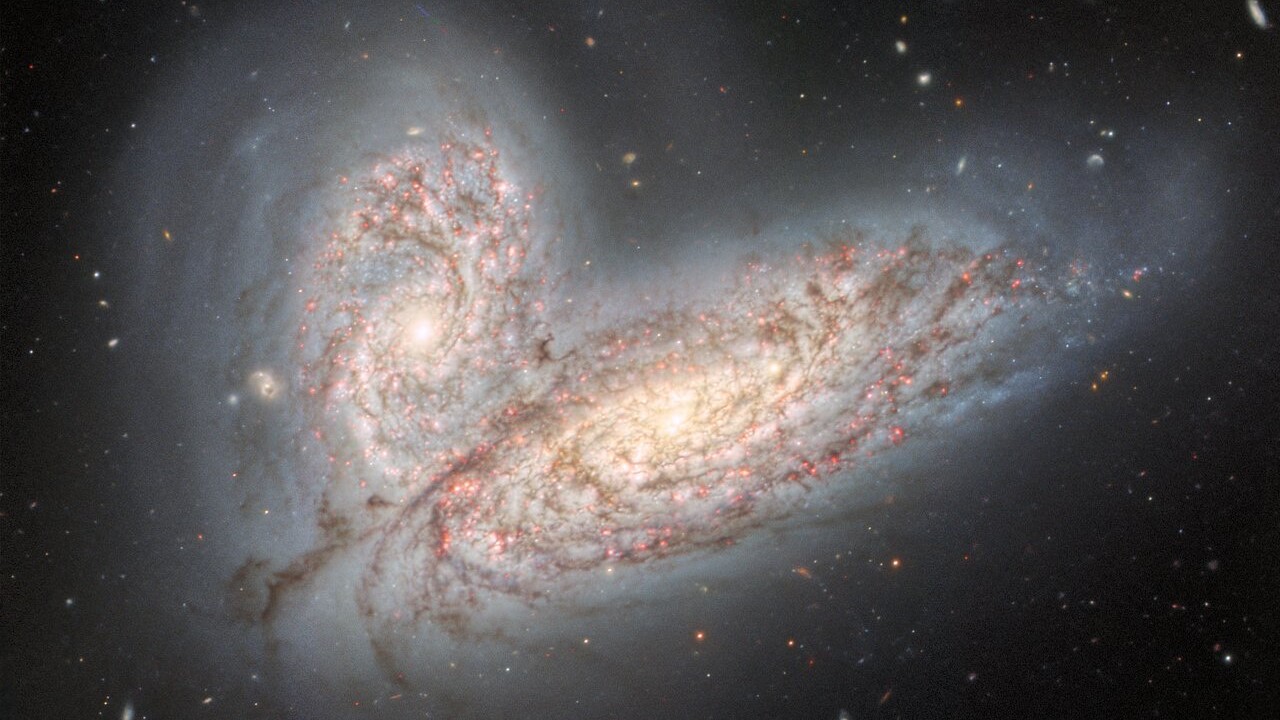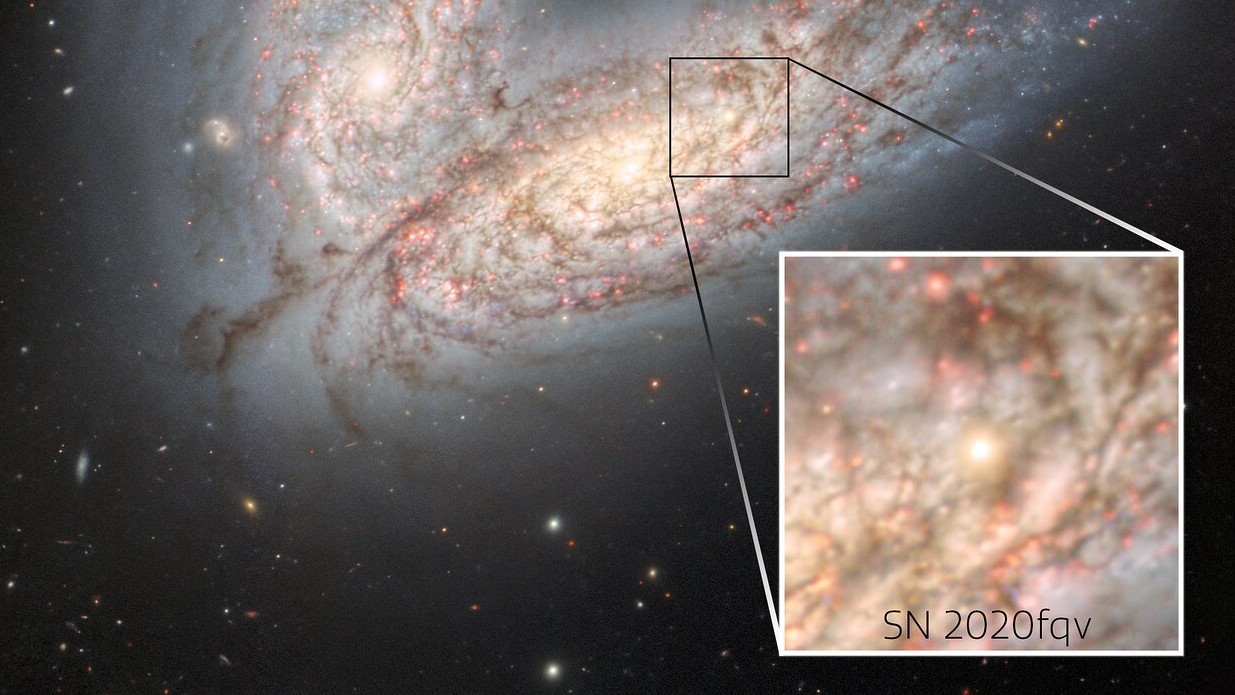'Cosmic butterfly' wings shimmer in image of violently colliding galaxies
The two spiral galaxies are about 60 million light-years from Earth.
Astronomers at the Gemini North telescope in Hawai'i have released a stunning image that shows two spiral galaxies in the process of colliding and merging.
The clashing galaxies NGC 4568 and NGC 4567 — also known as the Butterfly galaxies due to the dual-lobed shape their interaction causes — are located 60 million light-years away from Earth in the Virgo Cluster and will form a brand new elliptical galaxy in around 500 million years, according to a statement from NOIRLab, which operates the Gemini North telescope.
The new image gives scientists a 'sneak preview' of what will happen in around 5 billion years when our galaxy, the Milky Way, collides with its closest large neighbor, the Andromeda galaxy. That clash will give each galaxy a major make-over, as well as possibly flinging the sun and the solar system into a different region of the resulting galaxy.
Related: James Webb Space Telescope's stunning 'Phantom Galaxy' picture looks like a wormhole

The image depicts the early stages of a galactic merger, one of the most spectacular events in the universe, and shows the two galaxies locked together by their mutual gravitational field.
The respective centers of NGC 4568 and NGC 4567 are still around 20,000 light-years apart, about three-quarters the distance between Earth and the heart of our galaxy, the Milky Way.
Life and death for stars
The original spiral shapes of both galaxies are still clear in the image, but as the merger progresses these arm-like patterns will be destroyed. The galaxies will lose their spiral structures as their battling gravitational forces trigger intense bursts of star formation.
Get the Space.com Newsletter
Breaking space news, the latest updates on rocket launches, skywatching events and more!
Over millions of years, as the galaxies twist around each other in ever-tightening loops, streamers of gas and stars will be drawn out of each galaxy. This process mixes the individual structures of NGC 4568 and NGC 4567 until a single elliptical galaxy is created.
At this point, the fuel for star formation — cool, dense clouds of gas and dust — will have been used up or driven out of what remains of the progenitor galaxies, ending the period of rapid star birth.
By combining computer simulations with observations of galactic mergers like the one between NGC 4568 and NGC 4567, researchers have discovered that mergers between galaxies form smooth and featureless elliptical galaxies.
This means that at the end of the merger process, NGC 4568 and NGC 4567 are likely to create a galaxy that looks something like its older neighbor, Messier 89, also located in the Virgo Cluster. This ancient galaxy now only has minimal star formation and is comprised of older, low-mass stars and ancient, tightly bound pockets of tens of thousands to millions of stars called globular clusters.

The Gemini North image, which was created from data collected in 2020, also shows a supernova, the bright cosmic explosion triggered by the death of a massive star. The supernova, designated SN 2020fqv, was first observed in 2020 and appears in the image as a bright spot located at the center of one of the spiral arms of NGC 4568, the galaxy at the bottom of the image.
The aftermath of the explosion was initially spotted by the Hubble Space Telescope and provided astronomers with ringside seat to the final moments of a star. Researchers are using observations like these to create an early warning system of other stars on the brink of going supernova.
Follow us on Twitter @Spacedotcom and on Facebook.
Join our Space Forums to keep talking space on the latest missions, night sky and more! And if you have a news tip, correction or comment, let us know at: community@space.com.

Robert Lea is a science journalist in the U.K. whose articles have been published in Physics World, New Scientist, Astronomy Magazine, All About Space, Newsweek and ZME Science. He also writes about science communication for Elsevier and the European Journal of Physics. Rob holds a bachelor of science degree in physics and astronomy from the U.K.’s Open University. Follow him on Twitter @sciencef1rst.









